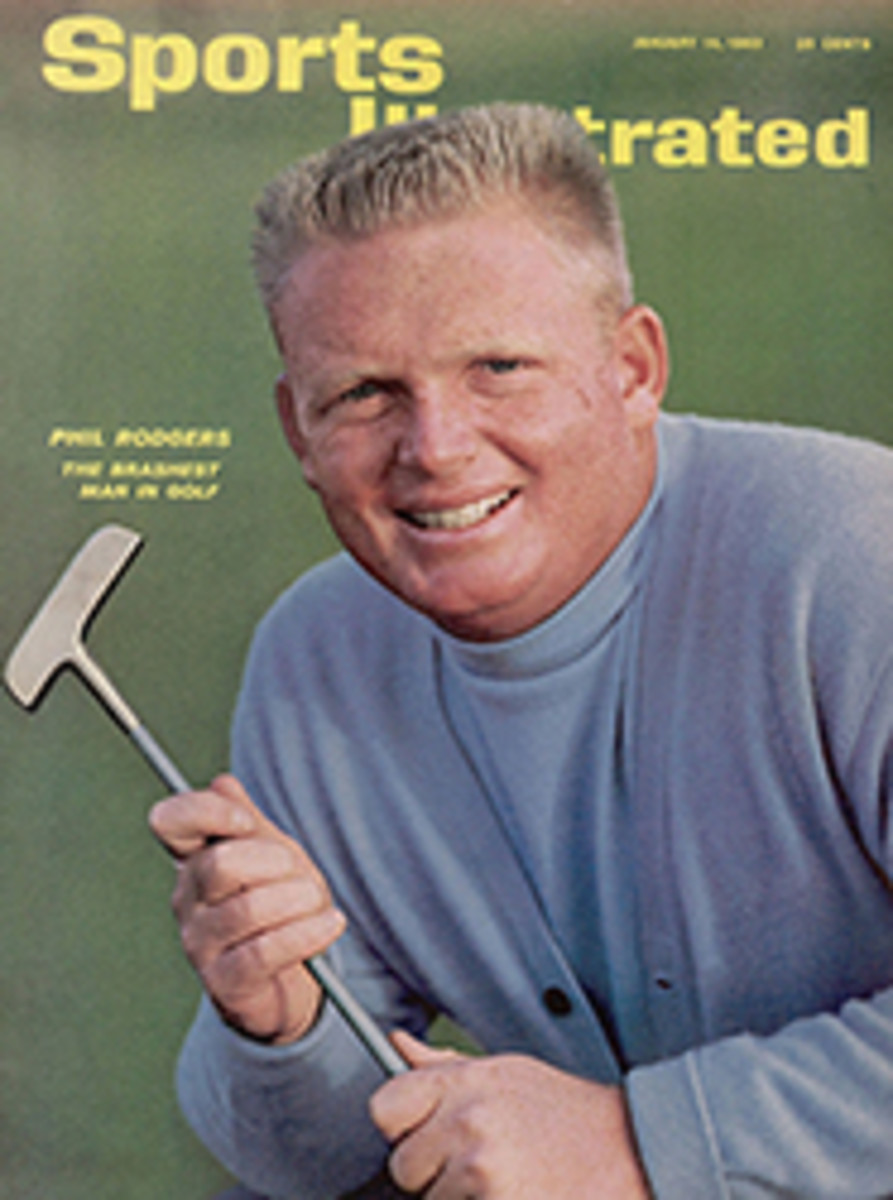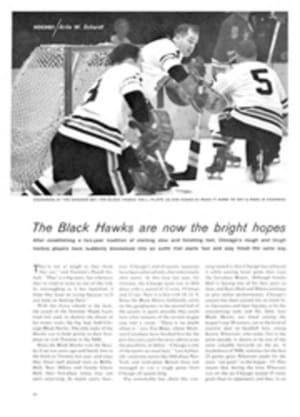
MILLENNIUM FOR U.S. SKI RACING
"IT'S GOING TO SHOW WHEN WE GET TO INNSBRUCK"
On the cold summit of the mountain at Vail, Colo., the air was still as glass. The snow crunched as a ski instructor glided off the chair lift and skated to the head of one of the trails. There he stopped and hung a small sign on a line across the head of the run. Its message: "Closed for Race Practice."
These four words announced, as dramatically as a Broadway marquee, the opening of a new era in American competitive skiing. The trail was indeed closed to recreational skiing. But it was wide open to a special kind of racing. For the first time on American slopes, an Olympic Alpine training camp was being conducted. Better yet, it was being conducted more than a year before the opening of the 1964 Winter Olympics at Innsbruck, so that the best young racers could learn and be remembered by the Olympic coaches before the U.S. team tryouts reach their climax in early spring. Best of all, it was well conducted. And about time.
"These kids are learning here," said Bob Beattie, U.S. Olympic ski coach, a roaring, hoarse-voiced blond who thinks in positive platitudes. "You can't win a race if you think you're coming in fourth. That's what we're here to build, and it's going to show up in Innsbruck next year when the old U.S.A. gets there."
It began to show up last winter when Beattie led a very young team on a swing through the European circuit, climaxed by the Fédération Internationale de Ski world championships in Chamonix. When that team first took off it was, in the great tradition of U.S. ski racing, underorganized (the competitors had never raced together), undertrained (the youngsters had paid their way to an informal camp in Boulder, Colo.) and underfinanced (they had not enough money to get back from Europe). As a result, the racing stables of the Alpine nations were barely able to conceal their amusement at the impoverished, immature U.S. team.
For the Europeans, it was a mistake. Beattie, wielding his platitudes ("When the going gets tough, the tough get tougher") with astonishing effect, got a rousing performance from his racers. They won seven major events and finished third behind Austria and France in the world championships. Suddenly, the U.S. was an international ski power, and the racers began to think as positively as their coach.
"The biggest thing we learned at Chamonix," said Chuck Ferries, the lithe 23-year-old who snatched the prestigious Hahnenkamm slalom title from the Austrians, "was that those guys really could be beaten."
While Ferries was learning this basic lesson, back in the States something else very basic was happening. The U.S. Ski Association was acquiring money—and a home—for its team. Ralph Des Roches, chairman of the American International Ski Competitions Fund, somehow hypnotized hundreds of people into giving money. By the time he was through, the team had $90,000 to meet $65,000 in expenses; the extra $25,000 was carried forward to the current year.
Since then the AISCF has come into more money, the biggest bundle delivered by the Skiers Training Trust, a newly formed group of Chicago businessmen who were fed up with the ski team's perpetual lack of training facilities. The Trust donated $10,000 to be used to start an Alpine training camp for American racers. The resort owners at Vail then stepped forward and announced that Vail's mountain and lifts would be available, free, from Dec. 22, 1962 to Jan. 4, 1963.
The 73 racers who arrived were the best of the nation's present and future ski talent. There were 10 members of last year's FIS team, and a wide supporting cast of noticeably talented youngsters. They began learning right away. Vicki Jones, only 13, from Tahoe City, Calif., learned how far it was to the top. "Sure, I want to ski right," she said as she practiced her exhausting racer's crouch, "but it's more than that. I have to ski right. Look how far I have to go competitively." A bit later she fell heavily in the thin, rutted snow, banged her helmeted head hard and burst into tears. But not tears of pain. "I just can't do anything right," she sobbed—and then came out by herself, voluntarily, the next day, Christmas Day, to practice some more. Brilliant Cathy Nagel, 14 but already national junior downhill champion, learned that it might not be so far up after all. "When I first came here." she said quietly, looking around at a roomful of racers, "I thought some of these skiers were gods. But I found out even gods make mistakes."
Veterans Buddy Werner and Gordy Eaton learned that what Beattie wanted was perseverance and tough conditioning. "Don't tell Beattie we've had four runs," said Eaton to Werner one afternoon. "He'll get the idea we ought to have eight." As for Beattie, he learned that at last the U.S. ski coach has the time and the place to build the discipline and the élan and provide the downhill training that a team must have to win at an Olympics. "Next year." he said as camp broke, "when someone taps us on the shoulder for Innsbruck, we'll be ready."
PHOTO
JOERN GERDTS
PHOTO
JOERN GERDTS
Looking pert and pretty despite crash helmet and bulky racing goggles, Virginia Birimisa (right), Mt. Shasta, Calif., chatters at top of downhill course, while Eleanor Bennett, St. Regis, Mont., waits to start down with her.
PHOTO
JOERN GERDTS
Practicing racer's crouch. Jack Turturici, San Carlos, Calif., booms down Vail course on first day. Later, unhappy at poor snow conditions, he left for home, the only one of 73 candidates who failed to stay full two weeks.
PHOTO
JOERN GERDTS
With the brilliant winter sun at her back, Barbara Ferries, best of the girl racers at the Olympic training camp, dives through a slalom gate on a practice run.
PHOTO
JOERN GERDTS
At a twist party on Christmas Eve after skiing practice, U.S. Junior Champion Cathy Nagel (center) learns to gyrate from slalom specialist Jimmy Heuga.

